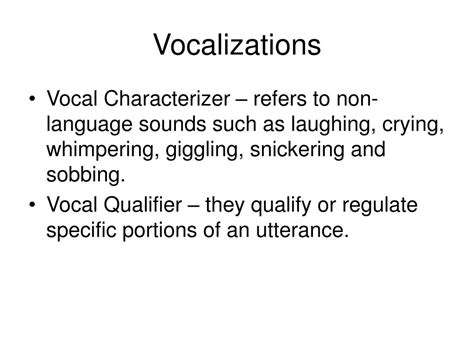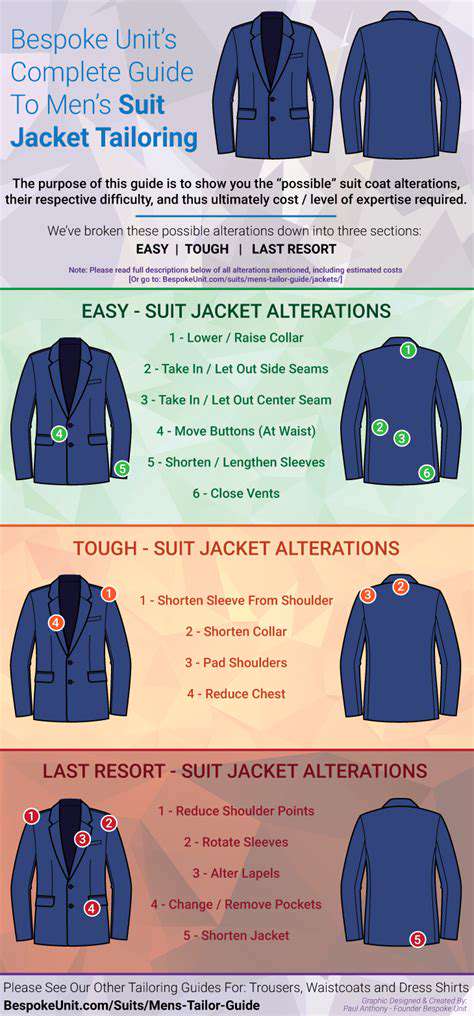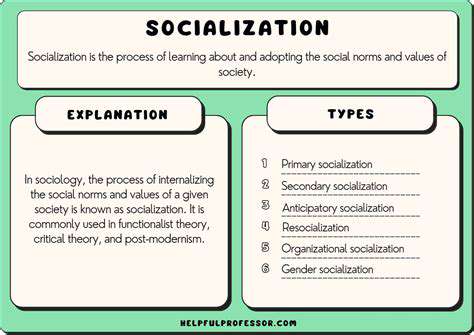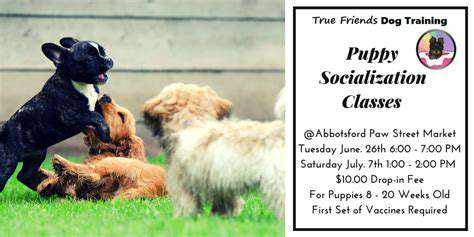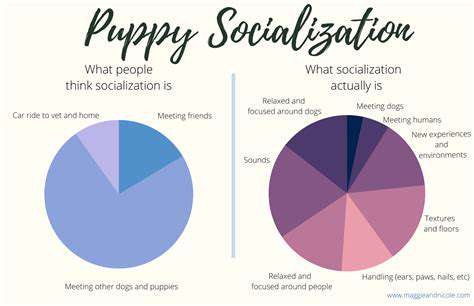Teaching Hand Signals for "Sit," "Down," and "Stay"
Outline
Dogs communicate mainly through body language and visual cues.
Hand signals improve verbal commands, especially in noisy settings.
Training consistency is vital for effective hand signal communication.
Common challenges include distractions and dogs preferring verbal commands.
Positive reinforcement enhances training outcomes and dog behavior.
Regularly assess progress and adjust strategies as needed.
Training in quiet environments helps dogs focus on signals.
Consistency and patience are essential in the training process.
Why Hand Signals are Important in Dog Training
Understanding Non-Verbal Communication in Dogs
Dogs are incredibly observant creatures, capable of interpreting various signals from their environment. Research emphasizes that dogs primarily communicate through body language and visual cues. This understanding is crucial when training them to respond to hand signals. A study published in the journal Animal Cognition showed that dogs can learn to associate visual signals with commands effectively when trained consistently.
Each dog may have its unique sensitivity to body movements. Some may respond better to changes in your posture or the way you position your hands. Therefore, recognizing your dog’s responses can help tailor your approach to hand signal training, allowing for more personalized and effective communication.
The Benefits of Using Hand Signals in Training
Incorporating hand signals into basic commands like Sit, Down, and Stay offers several advantages. First, it can enhance the effectiveness of verbal commands, especially in noisy environments where your voice might not carry. A study from the University of Veterinary Medicine Vienna highlights that dogs often respond more positively to visual cues than auditory cues under certain conditions. This can significantly improve compliance during outdoor training sessions.
Additionally, hand signals can foster a more engaging training experience for both the dog and the trainer. This interactive approach encourages dogs to focus and reduces frustration that can arise from miscommunication. Therefore, integrating hand signals into daily training routines can yield better results and strengthen the bond between you and your canine companion.
Basic Hand Signals for Common Commands
When teaching your dog hand signals, it's vital to keep them simple and consistent. For the Sit command, raising your hand palm facing up at about shoulder level can be effective. To teach Down, moving your hand downward with the palm facing the ground can help convey the message clearly. For Stay, extending your arm fully in front of you, palm open, usually provides a strong visual cue.
It is advisable to couple these hand signals with verbal commands initially. Gradually, you can phase out the verbal cues as your dog becomes more adept at responding to the visual signals alone. This process ensures that your dog is genuinely learning the meaning of the signals rather than merely associating the command with the sound of your voice.
Consistency is Key in Training Outcomes
For effective communication through hand signals, consistency is paramount. Dogs thrive on repetition and clear expectations. This is where sticking to a routine can significantly impact your dog's learning curve. Regular practice sessions will help reinforce the associations between the signals and commands.
It's also important for all family members involved in the dog's care to use the same signals and commands. Disjointed cues can confuse your dog and hinder its ability to learn effectively. If everyone on the family team is aligned, your dog will have a clearer path to understanding what is expected of them. Documenting your signals can also serve as a helpful reference for everyone involved.
Common Challenges in Hand Signal Training
One of the main challenges in hand signal training is a dog's natural inclination to rely on verbal commands. It can take time for your dog to transition fully to visual cues. Your dog's attention span plays a significant role in this process, especially for younger dogs. Short, focused training sessions are more engaging and can yield better results than lengthy ones filled with too much information.
Additionally, distractions such as other animals, people, or noises can impede training sessions. Finding a quiet place to practice can help your dog focus better on your signals. If your dog seems uninterested or distracted, it may help to incorporate higher-value treats or toys into the training. This can motivate your dog and reinforce the desired behaviors more effectively.
Tracking Progress and Adjusting Strategies
To gauge your dog's progress with hand signal training, maintain a consistent record of session outcomes and your dog's responses. This information can help identify what works and what doesn't, allowing you to adjust your teaching strategies accordingly. For instance, if your dog struggles with a specific signal, consider breaking it down into smaller steps for easier understanding.
Incorporating a reward system can also enhance the training process. Positive reinforcement through treats or praise when your dog correctly responds to a hand signal can solidify the learning experience. Over time, you'll notice patterns in your dog's behavior that can inform how you approach future training sessions.
Teaching the Sit Command with Hand Signals
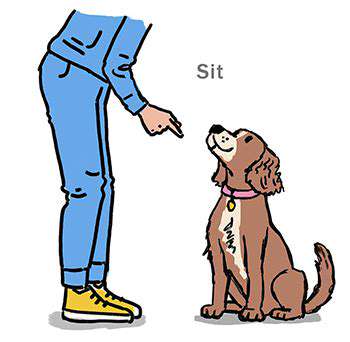
Understanding the Basics of Hand Signals
Hand signals are an essential tool in dog training, providing clear communication between the trainer and the dog. The use of non-verbal cues can enhance the training experience, making it both effective and enjoyable. Many dogs respond well to body language, which is why incorporating hand signals into your training regimen is beneficial.
According to studies, dogs are capable of interpreting human gestures, which reinforces the idea that hand signals can be highly effective. This ability stems from their history of cohabitating with humans, leading to a shared understanding of Non-Verbal Communication.
The Importance of Consistency in Training
Consistency is key when teaching any command through hand signals. Whether you're working on the Sit command or any other, always use the same hand gesture. This reinforces learning and helps your dog associate the signal with the desired action. Moreover, inconsistent signals can confuse your dog, delaying their progress and leading to frustration for both parties involved.
- Use the same gesture every time.
- Ensure everyone involved in training is on the same page.
- Reinforce the command regularly for the best results.
Choosing the Right Environment for Training
The environment plays a crucial role in the effectiveness of dog training with hand signals. Begin your training sessions somewhere quiet, free from distractions. This can help your dog focus on your signals without competing environmental stimuli. As your dog becomes more proficient, you can gradually introduce more challenging environments to test their learning.
Additionally, training outdoors can reinforce your dog's ability to respond to signals in various circumstances. This flexibility is especially important for real-world applications where distractions are common.
Breaking Down the Sit Signal
To teach your dog the Sit command using hand signals, start by holding your hand palm-up toward your dog's face. This gesture signals them to pay attention. As you signal, gently guide their backside down toward the ground while utilizing the verbal command “Sit.” This combination reinforces the behavior and the signal effectively.
Once your dog sits, reward them promptly with treats and praise. This immediate reinforcement helps to solidify the command in their mind. Over time, try to phase out the verbal command and rely solely on the hand signal, ensuring your dog learns to respond to it independently.
Integrating Verbal and Non-Verbal Cues
Combining verbal cues with hand signals can facilitate faster learning for your dog. When teaching the Sit command, saying “Sit” in conjunction with the hand signal can help your dog make the connection between the two. After several repetitions, you can gradually reduce the verbal cue, allowing the hand signal to take precedence.
This method not only aids in quicker learning but also enhances your overall communication. Dogs are observant creatures; they naturally pick up on subtle cues, so pairing signals is an excellent way to leverage their strengths.
Common Mistakes to Avoid
When teaching your dog to sit using hand signals, there are several common pitfalls to be aware of. One mistake is using unclear signals that your dog may find confusing. Always ensure your hand signals are distinct and easily recognizable. Additionally, avoid repeating the signal too often without a reward, as this can lead to disinterest.
Patience is vital during this process. Dogs learn at their own pace, and rushing the training can lead to setbacks. Moreover, don’t forget the importance of a positive reinforcement strategy; always reward your dog’s successful performing of the “Sit” command with a treat or praise.
Evaluating Progress and Adjusting Techniques
Monitoring your dog's progress is vital for successful training. Keep track of how quickly they respond to the hand signals and adjust your techniques as needed. If you find that your dog struggles with the Sit command, it may be time to revert to more basic training strategies or allocate more time to practice.
Regular evaluation helps identify whether the methods in use are effective. The goal is to create a solid foundation for understanding signals, so feel free to adapt your approach as your dog's training needs evolve.
Introducing the Down Command with Hand Signals

Understanding the Importance of the Down Command
The Down command is critical in dog training as it signifies a dog’s willingness to follow the owner’s instructions. This command creates a solid foundation for safety and control, especially in public spaces where potential distractions may arise. By teaching your dog to lie down on command, you're enhancing their focus and compliance with your instructions.
Moreover, the Down position is often used to calm an excited dog. In high-energy situations, having a dog that can quickly move to a down position can prevent them from jumping on guests or running away. This command translates well into many real-life scenarios, reinforcing a sense of security for both the owner and the dog.
How to Introduce the Hand Signal for Down
To effectively teach the hand signal for Down, first choose a consistent gesture. Common signals include lowering your hand down in front of you or using an open palm facing towards the ground. Consistency is key for your dog to understand the association between the gesture and the command.
Start the session in a quiet area with minimal distractions. With patience and positive reinforcement, such as treats or praise, encourage your dog to lie down. Use your chosen hand signal while simultaneously stating the command “Down.” This dual approach aids in solidifying the connection between the command, the gesture, and the desired behavior.
Utilizing Positive Reinforcement Techniques
- Use treats or praise immediately when your dog successfully performs the command.
- Incorporate short training sessions to keep your dog engaged.
- Gradually increase the difficulty of the training environment to challenge your dog.
Positive reinforcement is vital in dog training and is particularly effective for the Down command. Using treats, praise, or playtime as rewards can help solidify the learning process, making it enjoyable for both the trainer and the dog. The core idea is to create a positive association with responding to the command.
As the dog becomes more proficient, you can gradually reduce the frequency of treats while maintaining verbal praise to encourage continued good behavior. This rewards-based approach helps instantiate the command in the dog’s mind, making it instinctive over time.
Common Challenges and Solutions
While teaching the Down command with hand signals, trainers may encounter challenges such as resistance or confusion from the dog. It's important to remain patient and attentive to your dog's body language. If they appear confused, revisit the basics without rushing to advanced commands.
Another common challenge is when dogs exhibit distractions. Ensure your training sessions are held in a calm environment at first. Gradually introduce distractions as your dog masters the command. This will help them learn to focus on your cues despite external interruptions.
When to Use the Down Command in Real Life
The Down command can be effectively utilized in various situations, including during vet visits, in public parks, or when hosting guests at home. It helps to keep your dog calm and under control, reinforcing their training.
For example, when entering a busy café, asking your dog to Down can prevent them from jumping on patrons or barking at passersby. This improves your dog's behavior and shows others that you have your pet well-trained. Understanding when and how to apply this command in different scenarios will significantly enhance both your dog's behavior and your confidence as an owner.
Mastering the Down Command: Progress Checkpoints
Regularly evaluating your dog's progress in mastering the Down command is essential. Set specific benchmarks to measure their compliance under varying conditions. Give yourself a timeline to assess their understanding, ensuring you celebrate small successes along the way.
Consider keeping a training journal to note your dog's responses and improvements. If they aren’t progressing as expected, reconsider your techniques or approach. Adjust your training methods, and don’t hesitate to consult professional trainers if necessary.
Beyond Down: Building a Stronger Command Vocabulary
Once your dog has mastered the Down command with hand signals, consider expanding their vocabulary with synonyms and related commands, such as “Lay” or “Settle.” This diversification helps in enhancing their understanding and flexibility in responding to your cues, ensuring they become well-rounded in obedience.
Continuously engaging your dog in varied training exercises will keep their mind sharp and receptive to learning. This ongoing development fosters a stronger bond between you and your dog, becoming more than just a training exercise but rather a mutually rewarding experience.
Mastering the Stay Command with Hand Signals
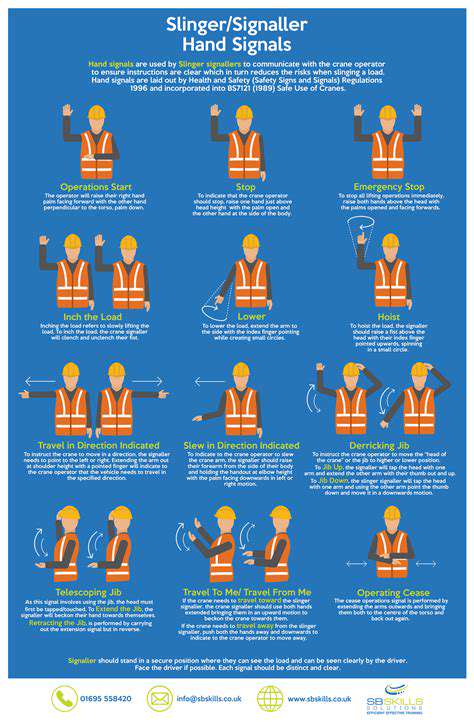
Understanding the Importance of the Stay Command
The Stay command is crucial for dogs as it teaches them self-control, which is an essential part of their overall training. This command can help prevent unwanted behaviors, such as running into traffic or jumping on guests. By mastering the Stay command, you are ensuring your dog's safety in a variety of situations.
Moreover, this command goes hand in hand with other commands like Sit and Down. When combined, these commands create a solid foundation for obedience. As the American Kennel Club emphasizes, consistency in training leads to better outcomes in behavioral control.
Techniques for Teaching the Stay Command
- Start with a solid Sit or Down command as a base.
- Use short durations initially and gradually increase the time the dog is required to stay.
- Keep a distraction-free environment at first.
- Always reward good behavior with treats or praise.
To effectively teach the Stay command, begin with your dog in a stable position, either in Sit or Down. Use a firm but calm voice while giving the command and introduce hand signals to reinforce the vocal cue. This dual approach enhances the dog's ability to understand what is expected of them.
Using Hand Signals Effectively
Hand signals serve as a vital visual aid in dog training, particularly for the Stay command. A clear, decisive hand gesture can often communicate more effectively than words alone, especially in distracting situations. Ensure your hand signal is distinct and easily recognizable by your dog.
For instance, you might use an open palm directed toward the dog to signify Stay. Consistency in the signal will help reinforce the behavior. This method is not only effective but also can be incorporated into play, making training a positive experience.
Common Mistakes to Avoid While Training
One of the most common pitfalls during training is inconsistency. If you don’t consistently use the same voice tone and hand signal, your dog may become confused about what you expect. Make sure that everyone in the household uses the same commands and signals.
Another mistake is allowing distractions during initial training sessions. Begin in a quiet area and gradually introduce distractions. Keeping training sessions short and focused can also keep your dog engaged. They tend to learn more effectively when they are not overwhelmed.
Consistency and Patience in Training
Understanding the Importance of Consistency
Consistency is key when teaching hand signals to dogs. Each training session should follow a similar structure to reinforce learning. For example, always using the same signal for Sit, Down, and Stay across different sessions will help your dog understand exactly what you expect. It’s essential to create a predictable environment that fosters learning.
Research indicates that consistent practices in dog training can significantly enhance a dog's ability to learn new commands. A study published in the Journal of Veterinary Behavior emphasizes the importance of a uniform training approach to improve obedience. Adhering to consistent cues allows dogs to make clear connections between signals and commands.
Creating a Training Schedule
It's essential to establish a regular training schedule to develop a routine for your dog. Short, frequent training sessions are often more effective than longer, infrequent ones. Aim for sessions lasting about 5-10 minutes, two to three times a day. This aligns with canine attention spans and keeps them engaged without overwhelming them.
Moreover, scheduling sessions at the same time each day can help your dog learn to associate those moments with training. This predictability in environment and timing can enhance their responsiveness to commands. It can also make training a more enjoyable part of your daily routine for both of you.
Utilizing Positive Reinforcement
Positive reinforcement is a cornerstone of effective training. When your dog responds appropriately to a hand signal, offer immediate rewards such as treats, praise, or playtime. This not only encourages desirable behavior but also strengthens the bond between you and your dog. Research from animal behaviorists suggests that dogs trained with positive reinforcement tend to be more eager to learn and comply with commands.
It's important to ensure that the rewards are meaningful to your dog. Every dog has different preferences; some may respond better to treats, while others might be more motivated by toys or attention. Tailoring your rewards can significantly enhance training outcomes.
Patience as a Fundamental Virtue
Patience is crucial in the training process, especially when teaching hand signals. Not all dogs learn at the same pace, and frustration can hinder progress. If your dog is struggling with a command, take a step back, and consider modifying your approach. Adopting a relaxed mindset can create a more conducive learning environment.
Additionally, it's essential to recognize the small victories. Celebrate every step your dog takes towards mastering a command, even if it's not perfect yet. Keeping a positive attitude can make a significant difference in your training sessions.
Adjusting Techniques Based on Learning Styles
Every dog is unique, and their learning style can vary. Some dogs may grasp concepts quickly using hand signals and visual cues, while others may need more time or alternative methods. Observing your dog’s reactions and adapting your training techniques accordingly can lead to better results.
For instance, if your dog responds better to verbal cues than to hand signals, try incorporating both methods simultaneously. Gradually phasing out the verbal cue can help reinforce the understanding of the hand signal. This combination approach can bridge the gap between different learning preferences.
Monitoring Progress and Making Adjustments
Regularly assessing your dog's progress is vital to ensure effective training. Keeping a journal or log of your dog's performance can help you identify patterns and areas that require additional focus. If a command seems to be challenging, consider revisiting the basics or adjusting your teaching strategy.
Pay attention to the environments in which training occurs. If your dog struggles with commands in distracting settings, gradually increase the level of distraction while ensuring they are still successful. A step-by-step approach will help build confidence alongside skill development.
Seeking Professional Guidance
Sometimes, engaging a professional trainer can be beneficial, especially if you encounter roadblocks in your training journey. A professional can analyze your specific situation and offer tailored strategies that may lead to better outcomes. They can also introduce you to more advanced techniques that might be outside your current knowledge.
When selecting a trainer, look for someone with experience and qualifications, as well as positive reviews from other clients. This ensures that the guidance you receive is based on proven methods and professional expertise, ultimately optimizing your training efficiency.
